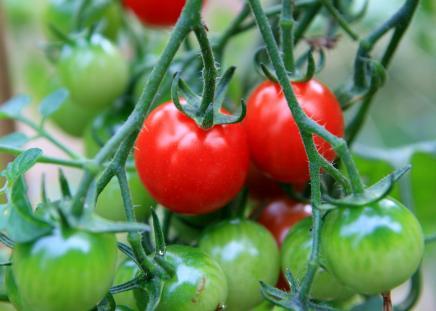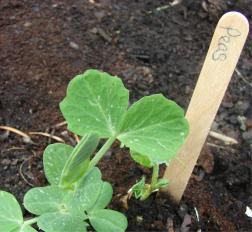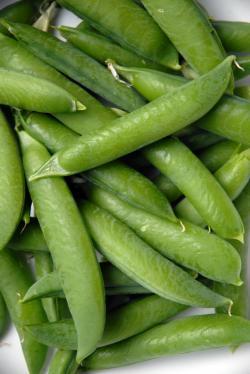Tasty and colourful food for your table!
 | |
| A single, potted cherry tomato pays big dividends in colour and flavour. |
The layout of a vegetable garden requires some planning. Running the rows north-south will make sure each plant receives the same amount of daylight, and be sure to plant the tallest vegetables at one end so they don’t shade the entire garden. A few vegetables, including potatoes, celery and leeks, need to have soil hilled up as they grow, so make sure to allow enough space between adjacent crops.
Vegetable transplants, available at your local garden centre, are the simplest and fastest way to garden. Leaf lettuce, carrots, peas and beans are all seeded directly in the ground. Some vegetables mature earlier than others and can be harvested mid-season and another crop planted in their space. Short-season crops include lettuce, snow peas, radishes and spinach.
| The newest trend in vegetable gardening is raised beds. Extra soil is added to raise the level of the bed quite high. The sides of the bed can be sloped gently or held in place with a timber or stone retaining wall. Raised beds should be narrow enough so you can reach into the middle without ever stepping into the bed. The theory behind raised beds is that the soil around the vegetables’ roots never becomes compacted — and the vegetables can be planted more closely. A spinoff on the raised bed idea is to plant your vegetables in several rows close together and then leave a wide row in which you walk up and down to access the tighter rows. Of course, veggies can also be grown in containers. Sow lettuce seeds in a half barrel for a pretty and practical garden accent. Put a cherry tomato plant in a pot on the patio and you’ve got a summer-long supply of sun-warmed appetizers, two steps from your back door. Containers are perfect for the special herbs or peppers used in ethnic cuisines, and such exotic plants are widely available at independent garden centres.
Use companion plantings to repel insets; they will also beautify your vegetable patch:
Visit www.landscapeontario.com to find an independent garden centre in your neighbourhood, select your seeds and starts, and enjoy a delicious garden this year. Landscape Ontario Horticultural Trades Association is one of the most vibrant associations of its kind, comprised of over 2,000 members, ten sector groups and nine local chapters. Its trade mission is to promote the horticulture industry in Ontario, and its public mission is to promote the joys and benefits of green spaces. For more information on the association and Green for Life, visit www.landscapeontario.com.
Media Contact: |

